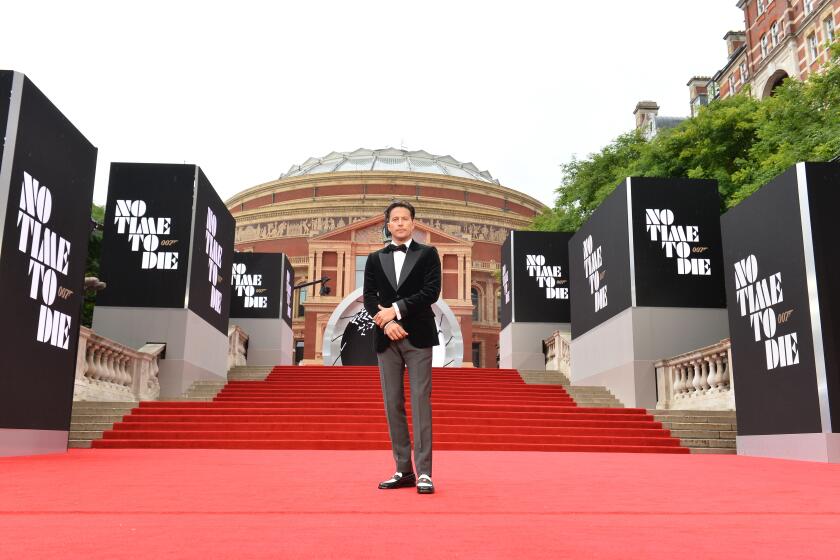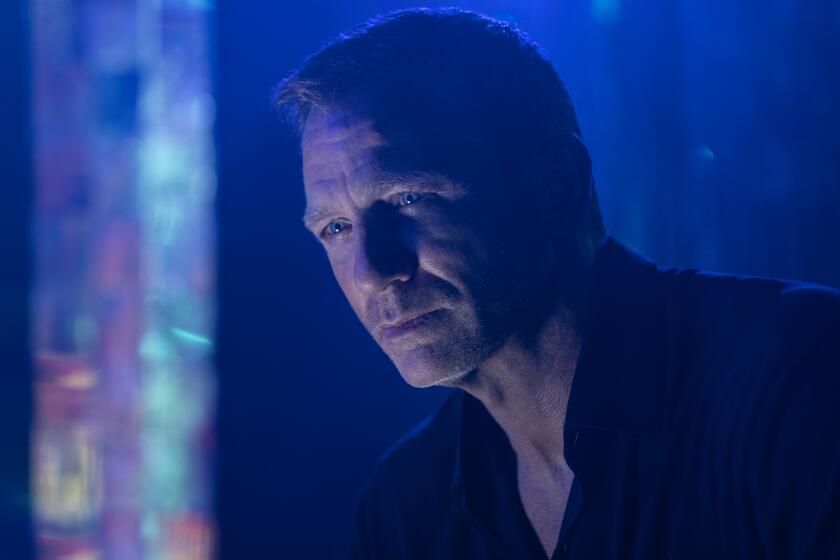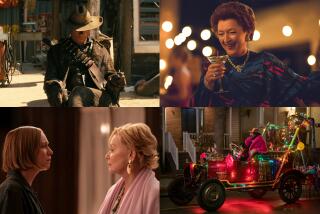How Cary Fukunaga cracked the ending of Daniel Craig’s James Bond saga
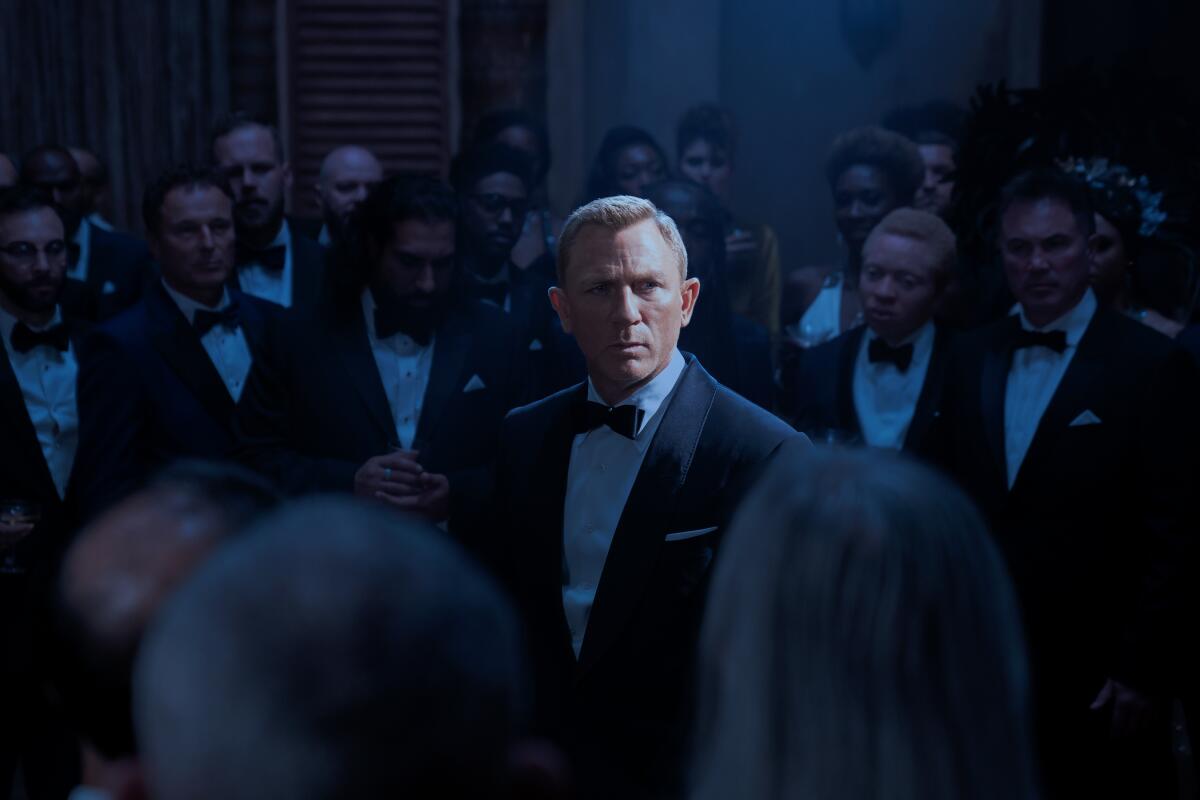
- Share via
Spoiler warning: The following story discusses the decisions behind plot elements in the James Bond film “No Time to Die.” While specifics of the plot have been redacted, this story is meant for those who have already seen the film.
That “No Time to Die” is intended to be Daniel Craig’s final film in the role of James Bond is no secret. (We say intended because as all Bond fans know, “Never Say Never Again.”) But just how Craig’s final Bond story would wrap up has been a point of mystery and speculation that only intensified over the course of several release date delays due to the COVID-19 pandemic.
Now that “No Time to Die” is in U.S. theaters, a week after already hitting multiple markets overseas, more audiences are finally experiencing director Cary Joji Fukunaga’s film full of emotion, action and surprise.
The specifics of the final few sequences, which are easy to find online, won’t be spoiled here — but the intentions behind certain choices are best understood once you’ve seen the film.
And while the team behind the film remains tight-lipped when it comes to the biggest twists and turns, the key players behind “No Time to Die” do acknowledge the difficulty of bringing Craig’s time as Bond to a satisfying conclusion.
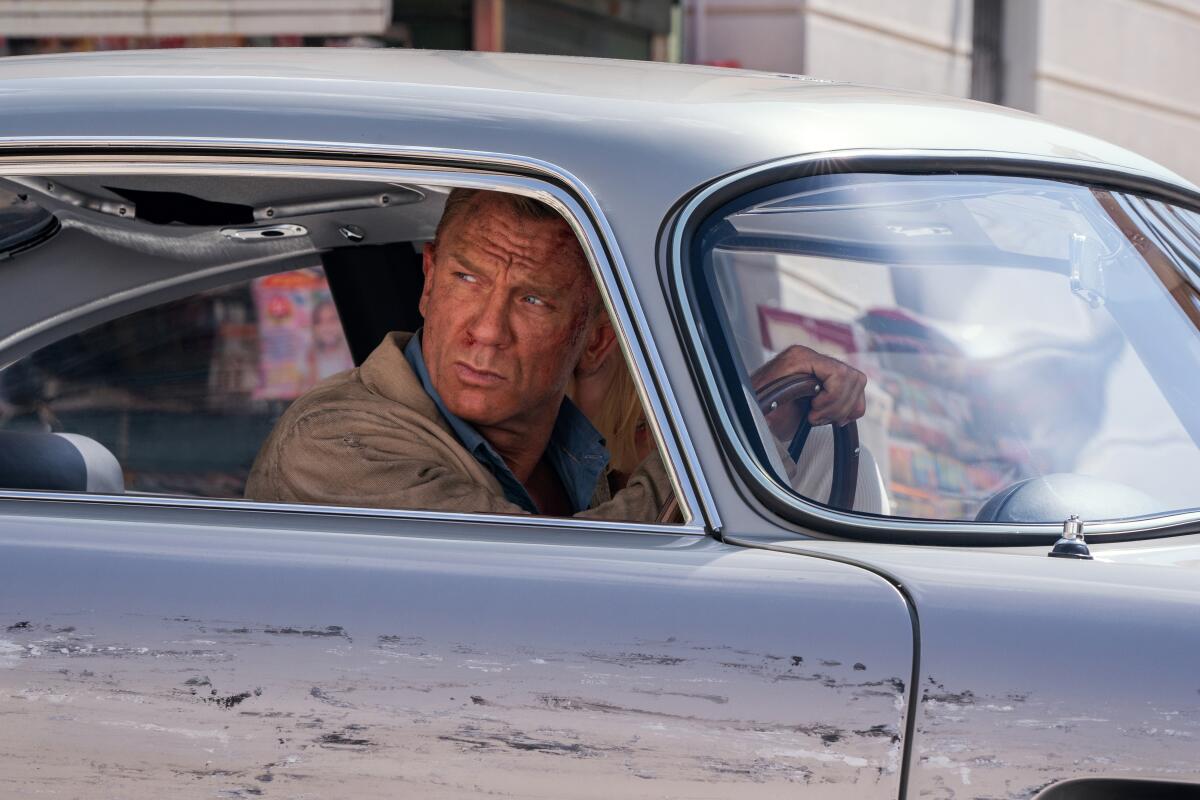
Since his debut in the role with 2006’s “Casino Royale,” Craig’s run as Bond has been unique in its serialized storylines alongside bigger and more elaborate set pieces and increasingly brutal close-contact fighting. And the way each of Craig’s films has built on what came before left a lot to wrap up in “No Time To Die.”
Fukunaga said he believes that Craig has had the end of Bond’s “No Time to Die” story in mind all along in his tenure as the character, but the challenge facing the screenwriters was finding exactly how the events would play out. (In addition to directing, Fukunaga is a writer on the film alongside “Fleabag” creator Phoebe Waller-Bridge and Bond veterans Neal Purvis and Robert Wade.)
“When I came on board, that’s what they wanted to happen, but that’s not an ending, that’s a result,” Fukunaga said of where the film leaves Bond. “I still had to come up with an ending that got us there and choices driven by Bond that gets us there.”
For producer Barbara Broccoli, whose family has overseen the entire run of Bond films and who has personally produced all of the Bond pictures since 1995’s “Goldeneye,” ending the Daniel Craig era was something to be very seriously considered. Even with the knowledge that the franchise would continue without him.
Cary Fukunaga steps into directing the James Bond franchise with ‘No Time to Die,’ bringing his sophisticated sensibility to the emotional conclusion of Daniel Craig’s five-film run in the role.
“It was certainly something we had discussed with Daniel over the years, the last couple of years, and it felt appropriate,” said Broccoli of the ending. “It felt like the fitting conclusion to his storyline. And I think it’s a great place to end his tenure and to start anew in the future.”
Craig declined to speak about the ending of the film, but he has been outspoken about his desire to subvert the traditions and rituals of the nearly 60-year-old Bond universe. And he found Fukunaga to be a kindred spirit in that regard.
“I’ve been trying to break eggs ever since I started this,” Craig said, noting that in the director and co-writer of “No Time to Die” he was excited “to have someone come along and do the same.”
When Fukunaga came on as director, replacing Danny Boyle who left over creative differences, he was facing the steep challenge of rewriting the script and getting the film into production on a tight timeline to release.
The screenplay uses Madeline Swann (Léa Seydoux), Bond’s romantic interest from “Spectre,” as a sort of catalyst to explore Bond’s lingering emotions for “Casino Royale” love interest Vesper Lynd (Eva Green), revisit key nemesis Ernst Stavro Blofeld (Christoph Waltz) and his Spectre network, and introduce a new villain, Lyutsifer Safin (Rami Malek), obsessed with creating a deadly bioweapon.
As these storylines converge, the film — and the entire series — builds to a dynamic and definitive conclusion.
Now that “No Time to Die” has officially had its world premiere, all your burning James Bond questions can be answered. (Without spoiling all the fun.)
“[With] the central villain’s device in this, it was very clear there was a lot of opportunities to have all these themes of parents and children and whatnot that we’re playing with,” said Fukunaga, “whether it’s Blofeld and Bond having grown up together or Madeline Swann being the daughter of [Spectre agent] Mr. White and the results of that and falling in love with a killer, obviously other components in this that play with the multi-generational aspect ...
“I knew in my gut that ... if we could do it right, all of this could tie together. We kept doing all these different passes and all these different versions of the end and it was eluding, eluding but I knew it was there. It felt like when you put a temp version of a song into a movie and a composer just kind of, like, does a version of that song — it always sounds like a copy. There’s something about having the results — the consequences of the end of the movie driving the motivation for the end — that wasn’t working.
“So I just reshaped the whole thing,” Fukunaga continued. “And then somewhere in one of those random parts of writing … I was like, ‘That’s it, that’s the thing that cannot be undone.’ And we finally can tie in all of the other things we’ve been doing or presenting since the beginning of the movie. That was a major moment of relief where it was like, ‘OK, right, now I know what it is that gets us to that end. And we can now write this thing.’”
Beyond the film’s narrative twists, Bond fans will appreciate another aspect of the ending: the use of John Barry and Hal David’s song “We Have All The Time in the World,” performed by Louis Armstrong, during the end credits. That song was originally used in 1969’s long-disregarded “On Her Majesty’s Secret Service” — the only appearance of Australian actor George Lazenby as Bond, and released between Sean Connery’s “You Only Live Twice” and “Diamonds Are Forever.” The Peter R. Hunt-directed film has more recently been reappraised in part due to such notable fans as filmmakers Steven Soderbergh and Christopher Nolan.
Daniel Craig’s final James Bond adventure is a classic blend of fresh and familiar, and it arrives just as cinemas need it the most.
“It came from two places,” said Fukunaga of using the song. “One, I had never seen ‘On Her Majesty’s Secret Service’ until I started doing research. I had seen pretty much every other Bond film. And somehow that one eluded me. I think it was one of those things where maybe it was just word of mouth or maybe it was because it wasn’t as popular, but I watched it and one, I just thought it was a gorgeously shot Bond film, but two, I loved that Louis Armstrong song.
“I hadn’t realized that that they were reprising the strings and the reed section of that in a bunch of other Bond films, but I wanted to definitely do it in this one,” he said. “Chris Benstead, our music editor, had dropped it into the early part of the film. And I was like, ‘This is perfect.’
“And ‘all the time in the world’ being a very purposeful piece of dialogue in that opening car ride [with Bond and Madeline] — [it’s] also meant a bit to be a red herring. I think for big Bond fans, they’re gonna expect a different outcome than what happens.
“So when we were coming up with the ending and we’re trying to figure out, ‘How big do you make this?’ And, Daniel was like, ‘I don’t want to make a big fanfare about it. I’d rather just it’s a fact and then we have Louis’ song play at the end.’ I’m like, ’Yeah, why not?’ Who cares if it’s been in another Bond film, let’s put it on our credits. It’s the right feeling to have there going out. It’s bittersweet, it’s poignant, but it’s epic at the same time.”
More to Read
Only good movies
Get the Indie Focus newsletter, Mark Olsen's weekly guide to the world of cinema.
You may occasionally receive promotional content from the Los Angeles Times.
